Related Research Articles

Kite aerial photography (KAP) is a type of photography. A camera is lifted using a kite and is triggered either remotely or automatically to take aerial photographs. The camera rigs can range from the extremely simple, consisting of a trigger mechanism with a disposable camera, to complex apparatus using radio control and digital cameras. On some occasions it can be a good alternative to other forms of aerial photography.

Frank Luke Jr. was an American fighter ace credited with 19 aerial victories, ranking him second among United States Army Air Service pilots after Captain Eddie Rickenbacker during World War I. Luke was the first airman to receive the Medal of Honor and first USAAS ace in day. Luke Air Force Base, Arizona, a United States Air Force pilot training installation since World War II, is named in his honor.

Aerial photography is the taking of photographs from an aircraft or other flying object. Platforms for aerial photography include fixed-wing aircraft, helicopters, unmanned aerial vehicles, balloons, blimps and dirigibles, rockets, pigeons, kites, parachutes, stand-alone telescoping and vehicle-mounted poles. Mounted cameras may be triggered remotely or automatically; hand-held photographs may be taken by a photographer.

Aerial archaeology is the study of archaeological remains by examining them from altitude.
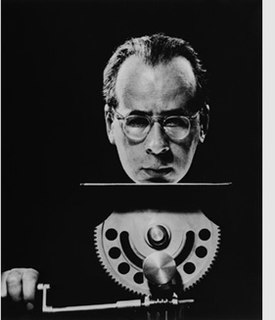
Philippe Halsman was an American portrait photographer. He was born in Riga in the part of the Russian Empire which later became Latvia, and died in New York City.
This is a list of aviation-related events during the 18th century :
Ashley Chadbourne McKinley was an accomplished American aerial photographer and colonel in the U.S. Army Air Corps who helped pioneer aviation at subzero temperatures. He accompanied Richard E. Byrd as an aerial photographer on his expedition to the South Pole.

Julius Ochs Adler was an American publisher, journalist, and highly decorated United States Army officer with the rank of major general. He distinguished himself during World War I as Major and battalion commander in the 306th Infantry Regiment and received Distinguished Service Cross, the second highest decorations of the United States military for valor in combat.
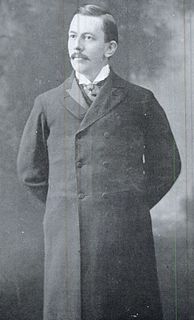
Warren King Moorehead was known in his time as the 'Dean of American archaeology'; born in Siena, Italy to missionary parents on March 10, 1866, he died on January 5, 1939 at the age of 72, and is buried in his hometown of Xenia, Ohio.
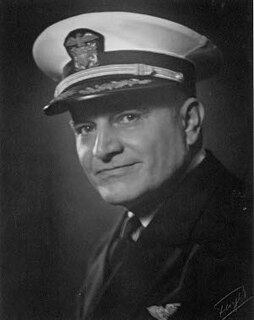
Paul Ernest Richter Jr. (1896–1949) was an aviation pioneer, co-founder of Standard Airlines and Executive Vice President of Trans World Airlines, Operations Chief of Staff of the Naval Air Transport Service during World War II and Chairman of the Board, President of TACA Airlines from 1947 to 1949.

George William Goddard was a United States Air Force brigadier general and a pioneer in aerial photography.

Arthur Batut was a French photographer and pioneer of aerial photography.

The 13th Aero Squadron was a United States Army Air Service unit that fought on the Western Front during World War I.
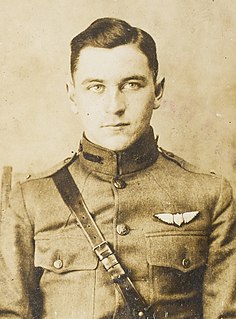
Arthur Raymond Brooks was an American World War I flying ace of the United States Army Air Service credited with shooting down multiple enemy aircraft. Among his most prominent achievements was when he single-handedly took on a squadron of German-flown Fokker planes officially downing 2 of them in one aerial battle piloting his Smith IV Spad XIII. He was a pioneer in the development of radio navigational aids (NAVAIDs) used by pilots for location and navigation as well as air-to-ground communications. Brooks also participated in early endeavors to commercialize aviation as a passenger-carrying business and was one of the earliest commercial pilots involved with carrying mail for the US Post Office Department.

Aerial reconnaissance is reconnaissance for a military or strategic purpose that is conducted using reconnaissance aircraft. The role of reconnaissance can fulfil a variety of requirements including artillery spotting, the collection of imagery intelligence, and the observation of enemy maneuvers.
Oberleutnant Friedrich Ritter von Röth was a German World War I fighter ace with 28 victories. He was the most successful German pilot at the extremely hazardous practice of shooting down enemy observation balloons, and destroyed 20 of them. Röth concentrated on observation balloons because they were large enough targets for him to see and hit with machine gun fire.
Leutnant Georg Meyer was a German World War I fighter ace credited with confirmed victories over six enemy observation balloons and 18 enemy aircraft.
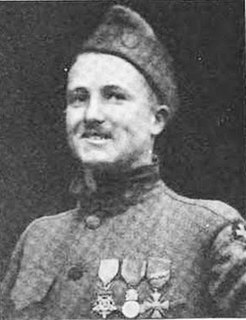
Ralyn M. Hill was a soldier in the United States Army who received the Medal of Honor for his actions during World War I.

LieutenantGiovanni 'Giannino' Ancillotto was an Italian World War I flying ace credited with 11 confirmed aerial victories. Rather unusually, he served solely with aviation while he was in the military, beginning in the lowest rank. Among his aerial victories as a fighter pilot were three over enemy observation balloons right after the Battle of Caporetto. As an example of the hazards of balloon busting, on 5 December 1917 Ancillotto returned to base with singed swatches of the third balloon's fabric adhering to his damaged fighter plane.

The First Army Air Service was an Air Service, United States Army unit that fought on the Western Front during World War I as part of the Air Service, First United States Army. The First Army Air Service was the largest and most diverse Air Service combat organization of the American Expeditionary Forces in France, and most American Air Service combat units were assigned to it when assigned to the front.
References
- ↑ "Ohio History Journal Archive". resources.ohiohistory.org. Retrieved 2020-12-22.
- ↑ "Dache Reeves - Recipient -". valor.militarytimes.com. Retrieved 2020-12-22.
- ↑ "Hall of Valor Dache M. Reeves". valor.militarytimes.com. Retrieved 2020-12-23.
- ↑ US 1693527,Reeves, Dache M.,"Aerial photograph interpreter",published 1928-11-27,issued 1923-03-21
- ↑ "Major Dache M. Reeves photographs of Ohio Mounds". sova.si.edu. Retrieved 2020-12-22.
- ↑ Barber, Martyn (2011). A history of aerial photography and archaeology. Swindon : English Heritage. ISBN 9781848020368.
- ↑ "OHJ Archive". resources.ohiohistory.org. Retrieved 2021-01-04.
- ↑ "Ohio History Journal Archive". resources.ohiohistory.org. Retrieved 2020-12-22.
- ↑ "Major Dache M. Reeves photographs of Ohio Mounds · SOVA". sova.si.edu. Retrieved 2021-01-04.
- ↑ "Photographs of native peoples of the Philippine Islands, views of habitations and scenery, made and/or collected by Major Dache M. Reeves · SOVA". sova.si.edu. Retrieved 2021-01-04.